OSLO (pop 5.2 million)
History. Founded by Harald Hardräda in 1049, Oslo is the oldest Scandinavian capital. In 1299, King Häkon constructed the Akershus Festning here to counter the Swedish threat from the east. Leveled by fire in 1624, the city was rebuilt in brick and stone on a more easily defended site by King Christian IV, who remamed it Christiania, after his humble self.
In 1814, the framers of Norway’s first constitution made Oslo the official capital of the new realm but their efforts were effectively nullified by Sweden, who had different ideas about Norway’s future and unifed the two countries under Swedish rule. In 1905, when that union was dissolved, Christiana flourished as the modern capital of Norway. The city reverted to its original name, Oslo, in 1925.
The City. There are 240 sq. kms of woodland, 40 islands and 343 lakes within the city limits and a train can take you to downhill skiing in 30 minutes. There is a network of 1200kms of hiking trials – bring your bathing suit as it is possible to swim in all but two of the lakes used for drinking water. 2400kms of prepared nordic tracks are available in the winter.
TIPS for OSLO
1. Oslo Pass. Good for 30 museums, all public transportation (buses, trams, metro, boats within zones 1 and 2), outside swimming pools, free walking tours and discounts on assorted attractions, I bought the 48-hour pass for NOK595 (the seniors discount of 495 is only if over 67). 24-hour passes are NOK395. Buy at the Oslo Visitor’s Centre next to the main train station, hotels and some museums.
2. Parking. Public parking in Oslo is notoriously expensive and heavily enforced so I Googled free parking in Oslo. Parking inside Ring 1 or 2 for free is generally not possible and even outside that unlikely, so I parked at Rosenholm train station about 19 minutes south of Oslo. The huge lot was almost full so many others do the same. The train was NOK35 but I didn’t have time to buy a ticket at the kiosk so paid a fee of NOK40 to buy it on the train. If parking outside Ring 2, park where you can take tram 11 or 12 into the city.
Day 1 Oslo / Day 2 Norway
I then had a big walking and museum day to maximize my Oslo Pass and see everything on Nomad Mania.
Kulture Kirken Jacob. This church is now an event venue with a full card of events.
Munch Museum. A monographic museum dedicated to Norway’s greatest artist, Edvard Munch (1863-1944), and housing the largest collection of his work in the world: 28,000 items including 1100 paintings and 4500 watercolours, many gifted to the city by Munch himself, although his best known pieces including The Scream, are in the National Gallery.
There were relatively few pieces on exhibit compared to the huge collection. He is an impressionist using broad brush strokes and depicting somber portraiture with dark eyes and few bright colours. I personally wasn’t impressed. NOK120


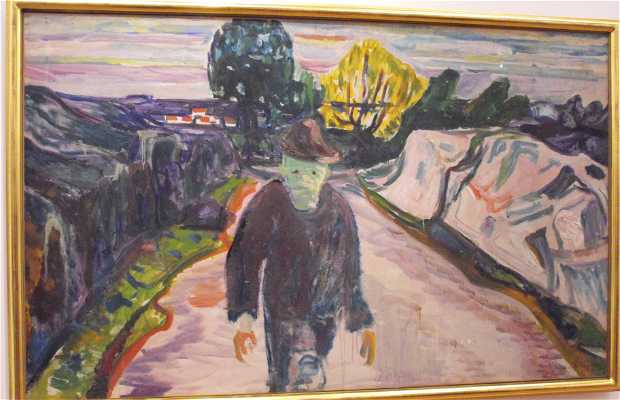
Natural History Museum. In a lovely botanical park and part of the university, this was one of the best natural history museums as all the stuffed critters were in gorgeous natural dioramas (the best is the Smithsonian in Washington DC). Animals from all over the world are represented along with some great crystals and fossils. Unfortunately the English is sporadic. NOK100


St Olavs Catholic Church. I walked back virtually along the same route I had used to get to the Munch and NH Museum to see this church, the first Catholic church I have seen for some time. It was nice to see the Ways of the Cross again (I have walked to all 12 in Jerusalem and notice them in every Catholic church I go to), great stained glass windows with large figures of several saints and 3 around the altar centered on a Jesus on the cross.
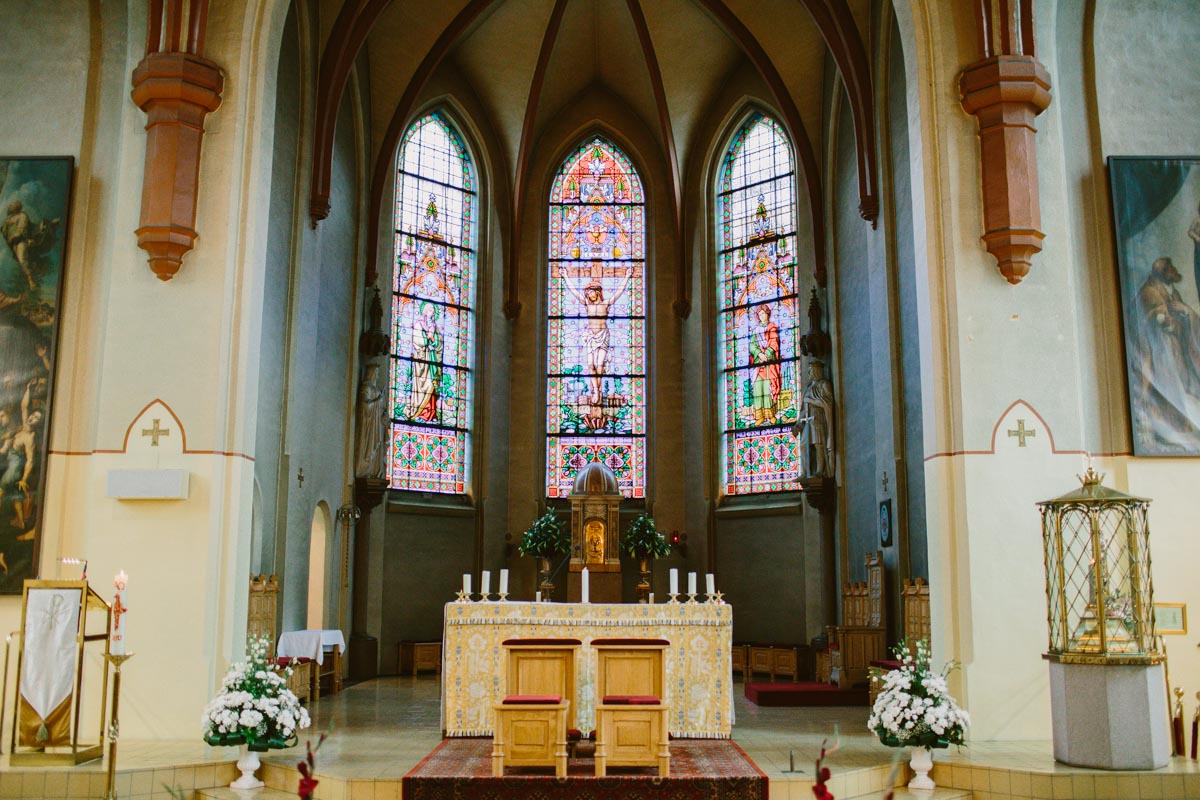
Royal Palace. The home of King Harald, the palace is not open to the public. It is not an overpowering palace in pastel green and yellow but sits at the end of a grand boulevard leading up to it. I talked to one of the guards, a Sikh fellow from the Punjab.

National Gallery. Showing art from antiquity to the 1950s with the galleries organized by period and type of painting, this is one of the better art museums. Everyone is represented, including some Picasso’s I actually liked (The Guitar), all the impressionists, and many Nordic artists painting realistically. I especially liked pieces by Peder Balke, Fearnley, Dahl, Krohg and Vigeland’s sculptures. And thankfully no contemporary art. NOK120
Nobel Peace Museum (Nobel Fredsenter). Alfred Nobel (1833-96) only awards the peace prize in Oslo at the City Hall, across from the museum (the rest are given out in Stockholm Sweden). The museum showcased Ban the Bomb and the 2017 winner, the International Campaign to Abolish Nuclear Weapons (ICAN) with many great photos of the Japanese bombing in WWII and missile silos in the central USA and North Korea. The permanent display is a digital display on the 128 winners of the peace prize since 1901 that offer as much or as little information as you feel like taking in. it is housed in a lovely yellow building close to the water. On the construction wall next to the exterior was individual stories of many refugees now calling Norway home. NOK100

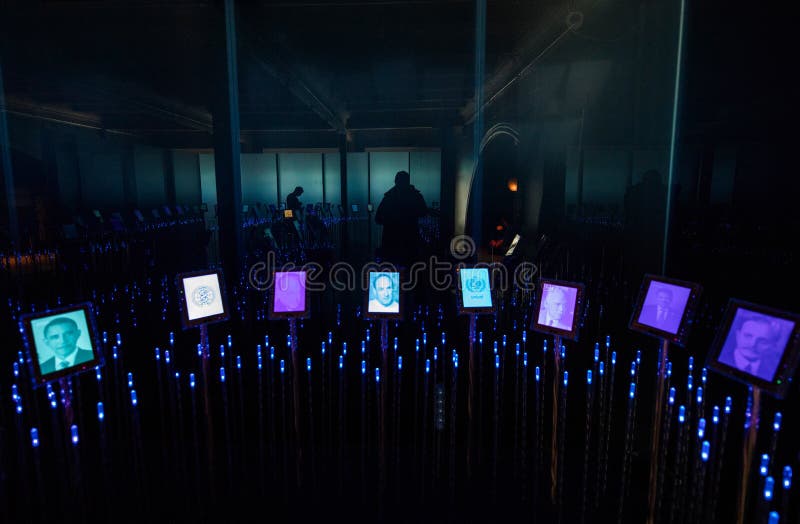
Akershus Festning. When Oslo was named capital of Norway in 1299, King hakon V built the massive fort strategically located on the Aker Peninsula innermost on the Oslo fjord. It was remodeled and extended several times especially in the early 1600s and was closed in 1814 as an operational fortress. It is a sprawling complex of a medieval castle, Akershus Slott, a fortress and still active military installation. Free

Norway’s Resistance Museum. Housed in a small building inside the fortress, it profiles the civilian and military resistance against the German occupation from 1940-45. The occupation was supported by the Norwegian Nazi Party, a symbol of treason every since. The Norwegian king and government left to spend the war in exile in London. The Germans became the civil administration of the country with political and press suppression, up to 400,000 German soldiers and the Gestapo. A clandestine press operated throughout the war supported by the BBC. Norway was massively fortified along the west coast. 45,000 Norwegians were imprisoned, many in concentration camps and 773 Jews were taken to Auschwitz with only 34 surviving. Shortages and rationing occurred.
Sabotage units operated especially in the north, destroyed the heavy water plant, supplied intelligence, destroyed several Germany boats and up to 40,000 men were involved from 1944 in fighting. NOK60
Mini-Bottle Museum. There are 50 different galleries of different little bottles in a 1000 sq. m. space. Fascinating. Open only on Saturdays and Sundays from 12-4. NOK 100

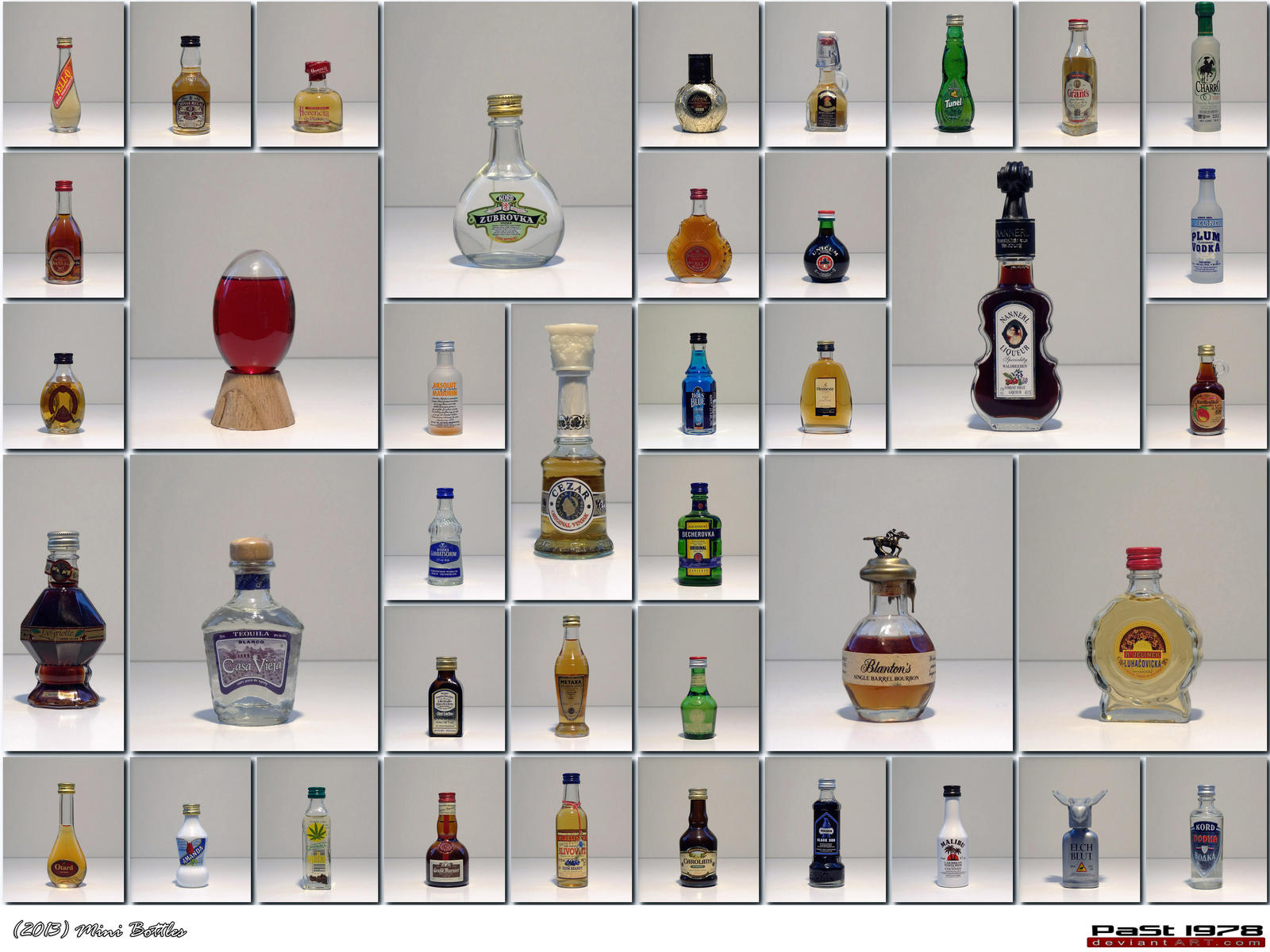
Vigeland Park. The huge park NW of the centre, is known for its amazing sculpture garden with 212 granite and bronze Vigeland works – entwined lovers, elderly couples and babies – culminating in the iconic column of twisting bodies.
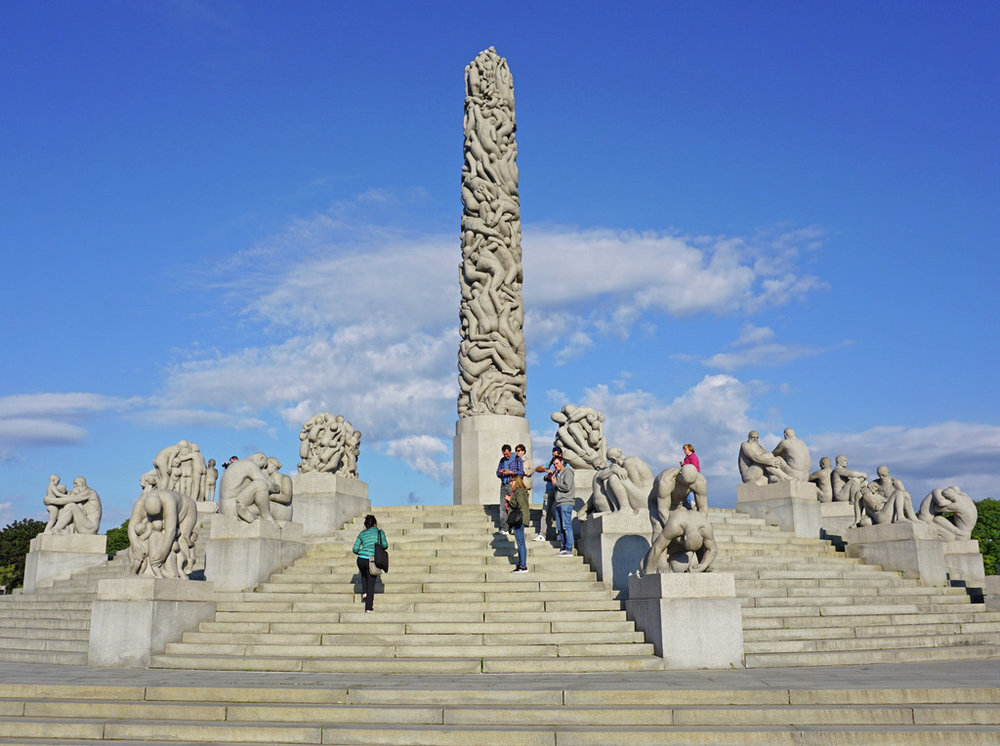

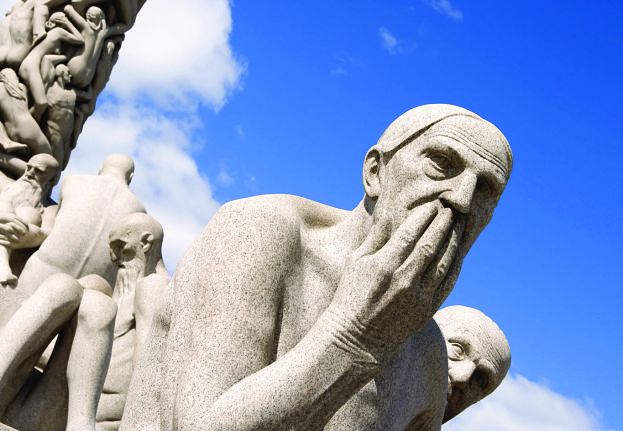 a
a

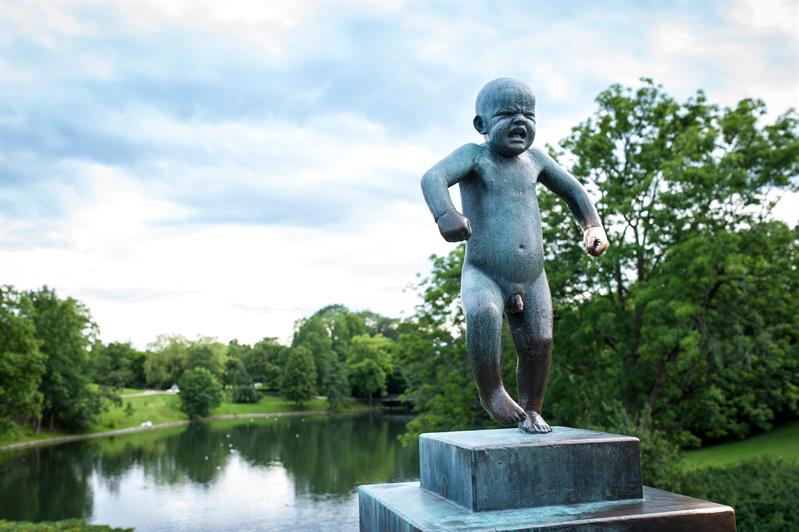
Bymuseum. Inside the park, the city museum has the usual information about the development of the city.
Vigeland Museum. This is a more in depth look at Gustav Vigeland’s work (1869-1943) at the SW corner of the park. The museum was built by the city in the 1920s as a home and studio for the sculptor in exchange for the donation of a significant proportion of his life’s work. It contains his early collection of statues and monuments to public figures, plaster molds, woodblock prints and sketches. NOK70
Day 2 Oslo/Day 3 Norway
Another big museum day, but this one was all driving to see NM sites on the outskirts of Oslo too far apart to walk, plus some of the ones I missed yesterday.
Baitun Nasr Mosque. In the far NE area of Oslo, this white mosque has blue trim, 2 minarets and a large silver dome. Entry was not possible – it is surrounded by a metal fence and locked gates.


Norsk Teknisk (Museum of Science & Technology). To the north of Oslo, this is an excellent museum with full of machinery, musical inventions, industry (oil, paper mill, sawmill) and a large transportation exhibit upstairs. There is also the Saint Exupery Planetarium.
Gamle Aker Kirke (Old Aker Church). Dating from 1130-80, it is Oslo’s oldest domkirke. Built of large dressed rectangular stone, it has a plain, flat façade and sits in a lovely park on top of a hill. The approach from the north was impossible to navigate because of construction but much easier from the south. It is only open on Thursdays form 16:00=18:00. All the signs are in Norwegian only.
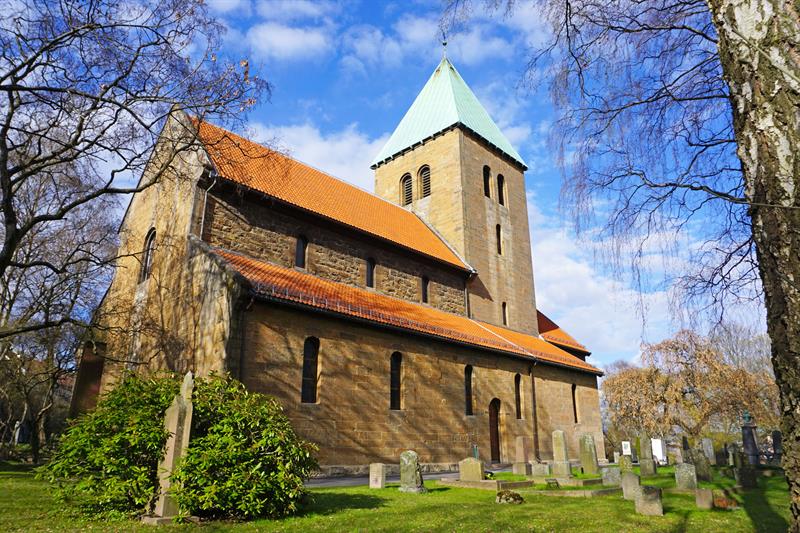

Barnekunst Museet (International Museum Children’s Art). This is housed in an old white house with blue trim surrounded by all kinds of colourful statues of people and animals. It is only open during the school year from 09:30-14:00.
The next six museums are close together on Bygdøy, the museum island of Oslo – opposite the Oslo harbour. There is free parking in the street to the left. This area can also be reached by ferry from the centre of Oslo – leaves every 20-30 minutes – free on Oslo Pass.
Polarship Fram Musuem. Dedicated to one of the most enduring symbols of early polar exploration, this 39m X 11m schooner was built in 1890 specifically for polar exploration. It was designed to deal with being frozen in the ice over the winter with a round, smooth hull – the boat was simply lifted up by the sea ice instead of being crushed like a narrower ship would be. Its rudder and propeller could be hoisted up to avoid being damaged. Made of oak, its bow and stern had 1.5m thick walls and .7-.8m thick sides. it was three-masted with a 34m main mast, but also had a 220HP steam engine and a 180HP diesel engine.
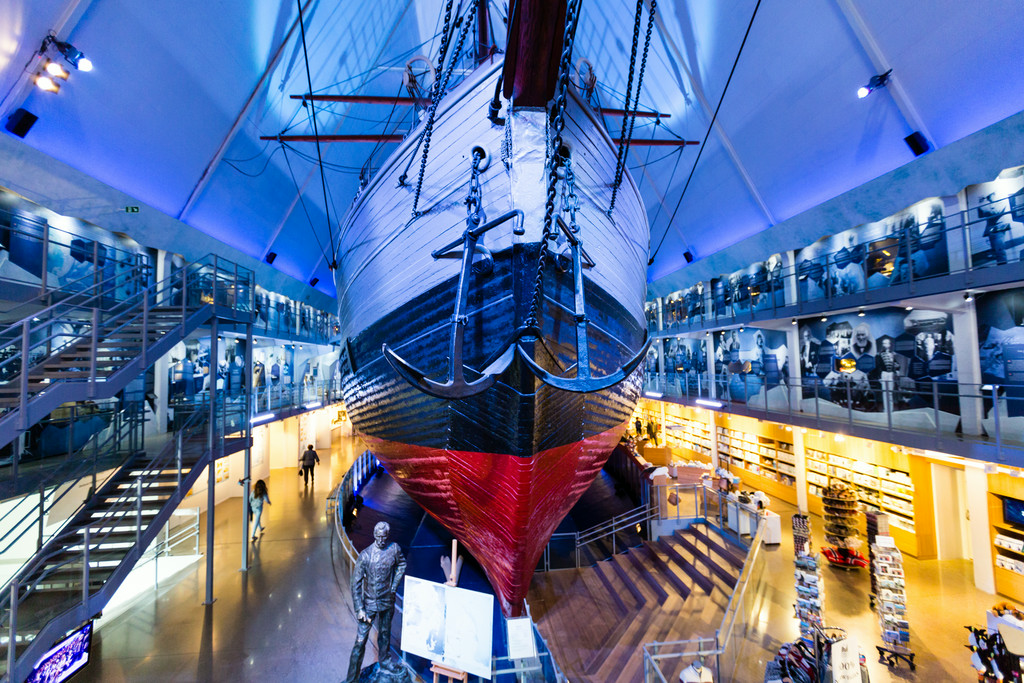
It made 3 major expeditions: Nansen’s attempt to ski across the North Pole in 1893-96, Sverdup’s attempt to do the same in 1898-1902 (reached N 85° 57’ in 1898) and Amundsen’s 1909-11 trip to Antarctica when he was the first to reach the South Pole (reached S 78° 41’ in 1911). There were 116 dogs plus pigs and sheep on the deck.
It is visited on 3 levels of walkway with exhibits and artefacts of all the expeditions. Cross a gangplank for a complete tour of all the decks.
There are also excellent accounts of all North American, Arctic and Antarctic expeditions from the very first attempts including Amundsen’s discovery of the Northwest Passage on the Gjoa in 1918-21).
Kon Tiki Museum. Thor Heyerdahl (1914-2002) was one of the world’s great explorers and humanitarians. With 6 men and 1 parrot he built and sailed the balsa raft, Kon-Tiki from Peru to Polynesia in 101 days in 1947 demonstrating that Polynesian could have been colonized also from South America. He demonstrates how the prevailing currents made it all possible.
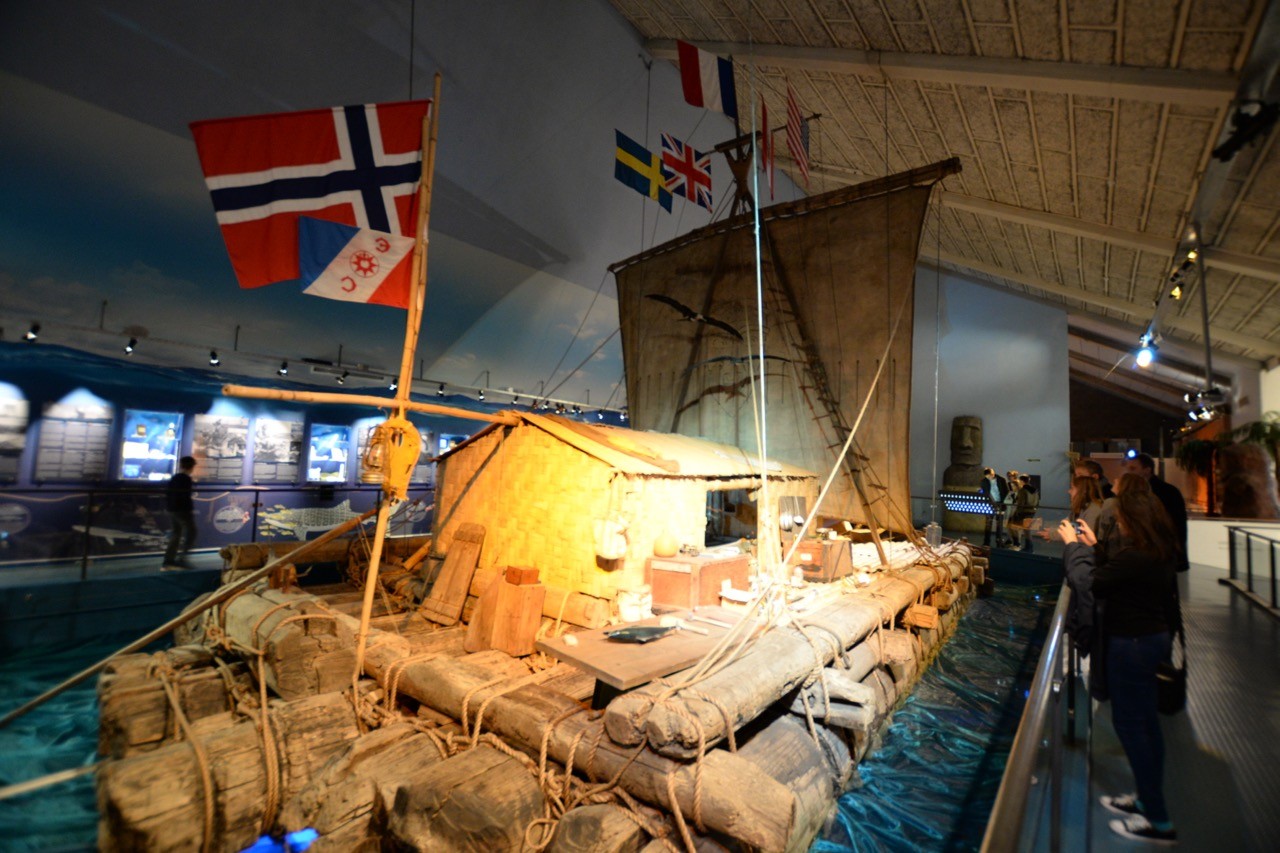
Also there is the totora-reed boat Ra II, built by the Aymara people on the Bolivian island of Suriqui in Lake Titicaca. Heyerdahl used it cross the Atlantic in 1970 in 57 days from Morocco to the Barbados using the NE trade winds and N Equatorial current.

Heyerdahl was also instrumental in investigating the culture of Easter Island and was involved in resurrecting several of the great heads. NOK120
Norwegian Maritime Museum. Start with a large collection of wooden fishing boats, figureheads and picture gallery. The displays in the basement level are excellent in showing how ships are built from hulls and sails to engines and of course there are tons of ship models. WW I is well represented with the highlight of a Norwegian merchant ship sunk by a German U-boat. There were 300 submarines in the German navy – 200 were lost in the war. The U53 alone sank 86 allied ships and severely damaged 12. NOK120
Norske Folkemuseum. This open-air museum recreates life in Norway from 1500 until today with 160 historic buildings relocated to the museum. Most are a huge number of rural and farm log buildings including the lovely Gol Stave Church, easily the highlight of the entire park. Stave churches are post and beam constructed using large log posts and massive planks on the walls. The doorframe and posts have great carvings and the altar is completely covered in painted icons.

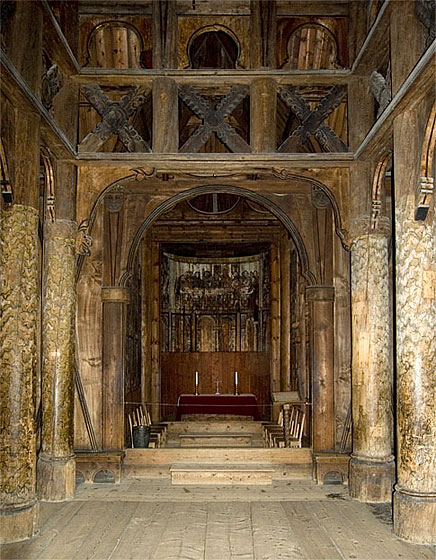
Also is a town from the 1950s (most buildings are open only on weekends) plus exhibits on Sami culture and Norway. NOK 120
Viking Ship Museum. The Viking Ship Museum and the Historical Museum make up the Norwegian Museum of Cultural History, part of the University of Oslo. Between them are 1.5 million historical objects collected over 200 years: from the Stone Age to more recent times.
Around 1100 years ago, Vikings dragged up two longships from the shoreline and used them as the centrepiece of grand ceremonial burials. Also buried were food, drink, jewelry, furniture, carriages, weapons, dogs and servants. Discovered in Oslo fjord in the late 19th century, the ships were restored giving a good insight into the world of Vikings. With many great artefacts, this is a must-see museum. The place with packed with bus tours. NOK100These ships were all ocean-going ships drawn up onto land to be used as burial ships.
Oseberg ship. Not designed for long sea voyages, this boat is 22m x 5m, was rowed and sailed with a square 90 sq m. sail with a speed of 10 knots. With 15 pairs of oar holes, there was a full set of oars in the grave and they sat on sea chests.
In 834, this ship was used as a burial ship for two powerful women and the two were given a rich collection of burial gifts: 3 elaborate sleighs, a wooden cart, five carved animal heads, five beds and the skeletons of 15 horses, 6 dogs and 2 cows. Most of the grave goods are on display in the museum.
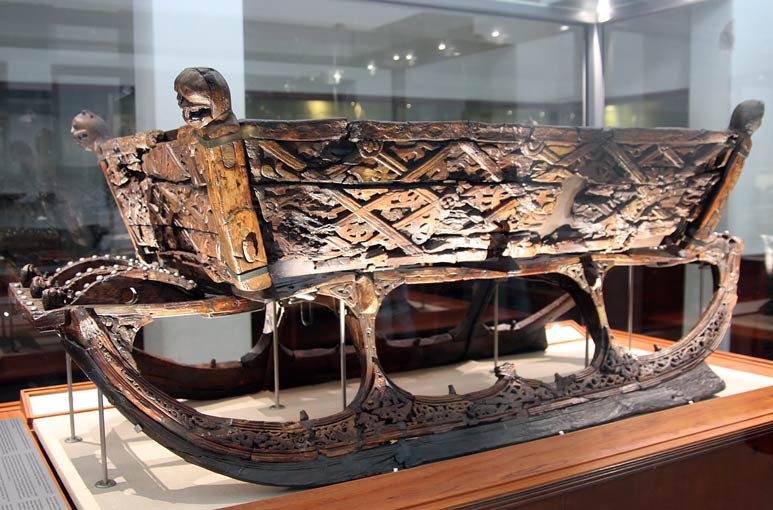
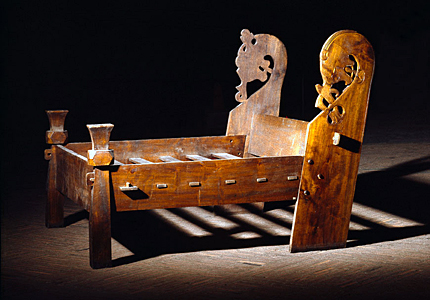

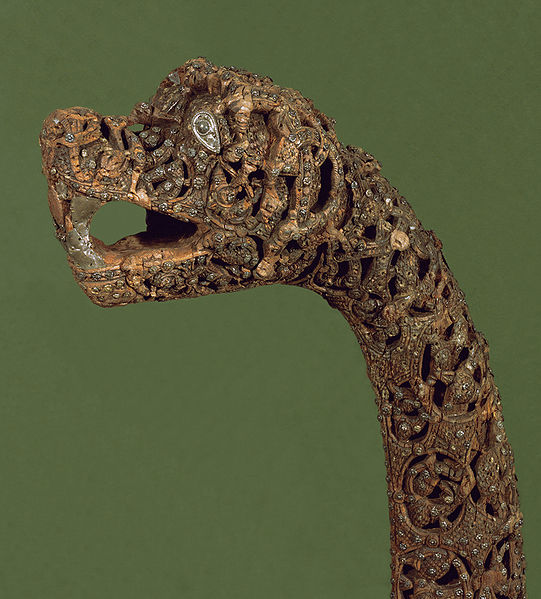
Gokstad Ship. This was built around the year 900 and some ten years later became the burial ship for a powerful man killed in battle when in his 40s. The ship was seaworthy and well-suited to voyages across the open sea – 24m x 5m, had 32 oarsmen and a 110 sq m. square sail with a speed of 12 knots The grave had already been plundered in the Viking age that may explain why no weapons or jewelry were found among the burial gifts. However the finds included a game board with game pieces, kitchen utensils, six beds, a tent, a sleigh and 3 small boats, as well as a harness fitted with iron, lead and gilded bronze. Also buried were 12 horses, 8 dogs, 2 peacocks and 2 goshawks. On display are bedposts, the harness fitting and the small boats. Clothing made of silk and wool plus tapestries survived the 1100 years.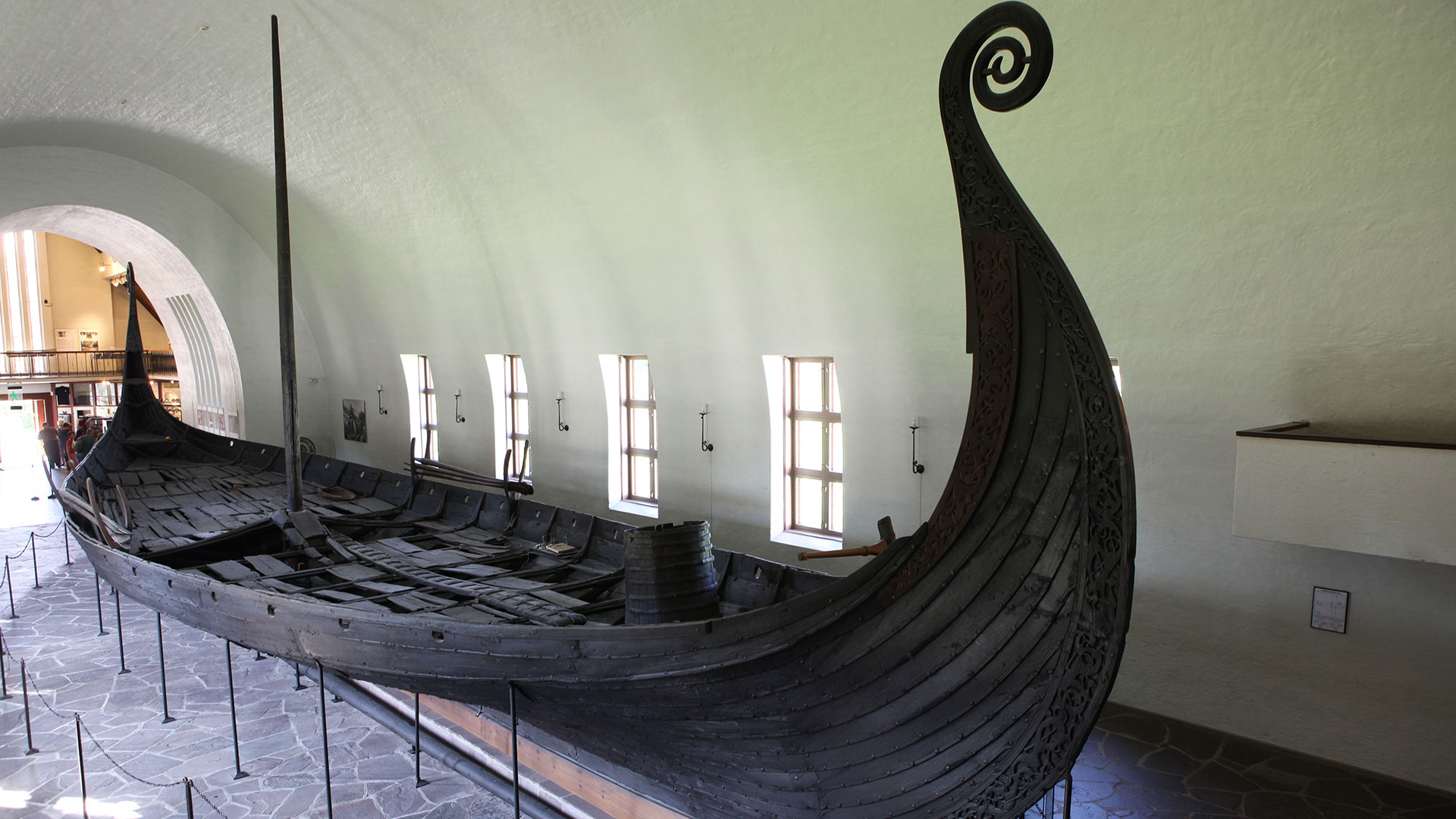 Tune Ship. It was the first Viking ship to be excavated in 1867. It was built in Oslo Fjord and a fast, ocean-going vessel dated to about 900 AD. Present were remnants of weapons and mail armour, a die, parts of a ski and the skeleton of a horse. None of these are preserved today and the only a skeleton of the vessel is on display.
Tune Ship. It was the first Viking ship to be excavated in 1867. It was built in Oslo Fjord and a fast, ocean-going vessel dated to about 900 AD. Present were remnants of weapons and mail armour, a die, parts of a ski and the skeleton of a horse. None of these are preserved today and the only a skeleton of the vessel is on display.
Borre Find. This is the burial goods from a large burial ship dating from about 900. The contents were almost completely destroyed over time and the ship was not preserved.
Oskarshall. This English-style country house was built in 1847-52 by King Oscar I (1799-1859), with the exterior, interior and furniture designed by the same Danish architect. It is a monument to Norwegian artists and craftsmen for its rich decoration and is surrounded by a park with paths and fountains. It is only open after September 1 on Friday-Sunday from 11-5 and seen by hourly guided tours.
Statoil Fornebu. There are many gas stations but this one supposedly near A-Lab is in the Nomad Mania “modern architecture” series, but I couldn’t find it.
Astrup Feamley Museum of Modern Art. This museum is housed in a building of silvered wood and a sail-like glass roof designed by Renzo Piano. The location right on the water is even better. Originally for conceptual American work from the 80s, it has broadened its scope some with some equally awful British artists (as you can tell, I hate most of this stuff).
One thing that was interesting – and more than a little odd – was some work by Damian Hirst who has cleverly sawn a cow and a calf in half and butchered 3 sheep and flayed their carcasses and then suspended them in plexi-glass containers in a fluid. How he went through the intestines and didn’t cut across them beats me. Another lovely piece was a large circular mosaic using real butterflies. NOK120
Ibsen Museum. Possibly the world’s second greatest playwright (after Shakespeare), Henrik Ibsen (1828-1906) lived in this apartment upstairs for the last 11 years of his life. Above a museum on Ibsen, this huge 350 sq m. apartment was new in 1895 and has a study where he wrote every day at 9am after a walk, 2 sitting rooms, library, dining room, kitchen and maid’s quarters. Seen by a very informative guided tour on the hour, it has been meticulously restored. Learn all you may want to know about the man and his family. Ibsen lived in Rome and Dresden for 27 years before returning to his native Norway. His works include NOK115


Vækero Manor. West of Oslo in a lovely park on the water is this grand manor house with immaculate grounds. There are no signs or information to indicate anything about it.
It was my last visit of the day and I ate in the park. A security guard, a nice older man dressed impeccably in a suit, visited me and gave me some information about the house. It is privately owned by Hydro, an aluminum producer and one of Norway’s largest industries. He told me that a function was being held in the house in the evening and politely asked that I leave when ready.

Oscarsborg Fastning (Fortress). This is a coastal fortress in the Oslofjord, close to the small town of Drøbak. The narrows at Drøbak is a natural point for the naval defence of Oslo. The first defences were constructed during the reign of Christian IV of Denmark and Norway and were ready in 1644. It was reconstructed in 1848 and 1853. The best known part is situated on two small islets.
By the end of the 19th century the art of war developed rapidly and the new fortress was soon obsolete. From 1890 new improved German guns were installed, an underwater barrier was built in 1874–79 on the western side of the fjord, thus making it impossible for large vessels to sail west of the fortress, and an underwater torpedo battery was constructed. The main armament was three 28 cm calibre guns manufactured by Krupp. The underground torpedo facility remained one of the few Norwegian defence installations unknown to German military intelligence at the point of the 9 April 1940 invasion.
In WWII, when Norway was invaded on 9 April 1940, all of the fortress’ armament was over 40 years old, and of German origin. Both the guns and the torpedo battery worked flawlessly when Oscarsborg encountered one of the German invasion flotillas; they sank the heavy cruiser Blücher, and threw back the German naval force heading for Oslo, thus managing to save the Norwegian King and government from being taken prisoner.
The fortress is now largely a civilian resort and attraction, open for visitors. The scenic surroundings is much used for conferences and excursions.
Reach it by ferry from Sundbrygga ferry dock in Drobek (NOK105) but the parking is some distance away. 


I purchased the Oslo Pass for 595NOK and used it for 1725NOK of museums plus 2 tram rides and a metro ride – a great deal to see many expensive museums otherwise. I finally left Oslo at 6pm to see the west of Norway.
